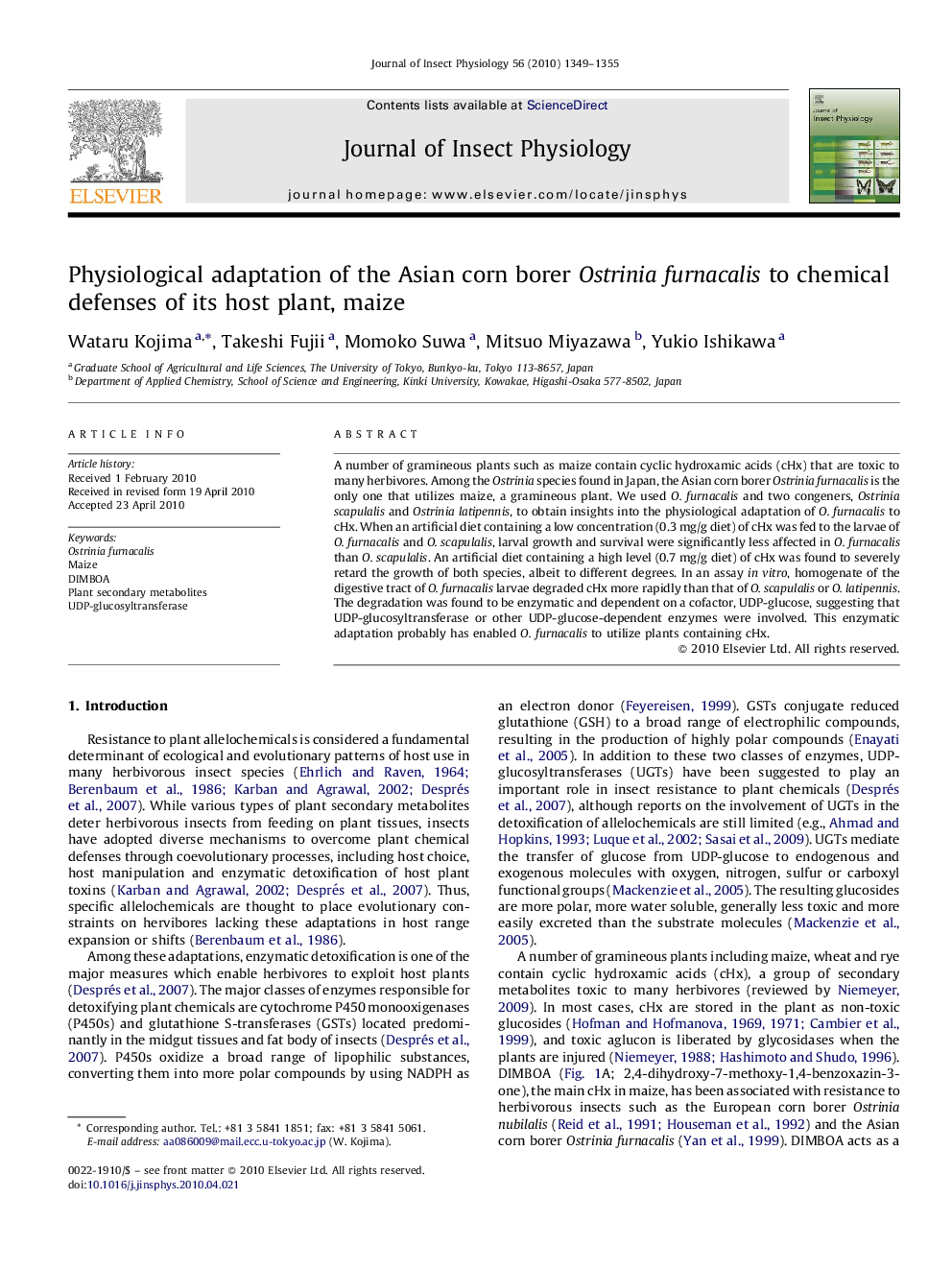| کد مقاله | کد نشریه | سال انتشار | مقاله انگلیسی | نسخه تمام متن |
|---|---|---|---|---|
| 2840953 | 1165367 | 2010 | 7 صفحه PDF | دانلود رایگان |

A number of gramineous plants such as maize contain cyclic hydroxamic acids (cHx) that are toxic to many herbivores. Among the Ostrinia species found in Japan, the Asian corn borer Ostrinia furnacalis is the only one that utilizes maize, a gramineous plant. We used O. furnacalis and two congeners, Ostrinia scapulalis and Ostrinia latipennis, to obtain insights into the physiological adaptation of O. furnacalis to cHx. When an artificial diet containing a low concentration (0.3 mg/g diet) of cHx was fed to the larvae of O. furnacalis and O. scapulalis, larval growth and survival were significantly less affected in O. furnacalis than O. scapulalis. An artificial diet containing a high level (0.7 mg/g diet) of cHx was found to severely retard the growth of both species, albeit to different degrees. In an assay in vitro, homogenate of the digestive tract of O. furnacalis larvae degraded cHx more rapidly than that of O. scapulalis or O. latipennis. The degradation was found to be enzymatic and dependent on a cofactor, UDP-glucose, suggesting that UDP-glucosyltransferase or other UDP-glucose-dependent enzymes were involved. This enzymatic adaptation probably has enabled O. furnacalis to utilize plants containing cHx.
Journal: Journal of Insect Physiology - Volume 56, Issue 9, September 2010, Pages 1349–1355